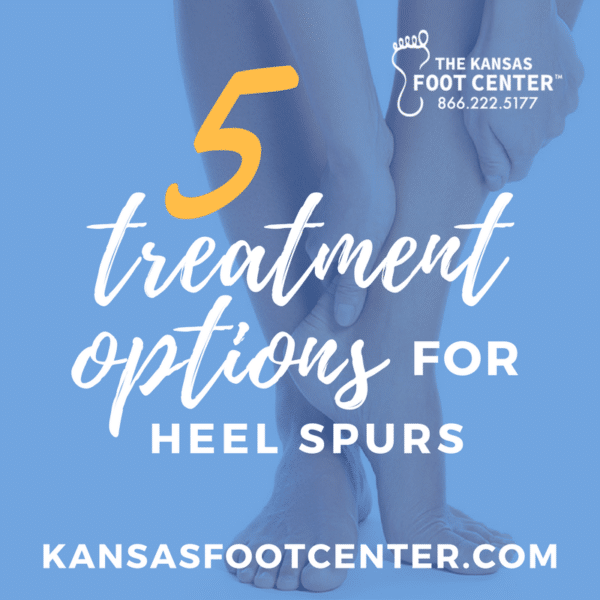Sharpen Your Knowledge of Heel Spurs
Here at The Kansas Foot Center, we treat patients for a wide array of foot and ankle conditions, including heel pain. The heel is a common source of problems. Some are attributed to the soft tissues in the area, like the plantar fascia or Achilles tendon, but others can involve bone tissue, and this is the case with heel spurs.
Your Heel and Bone Spurs
Each foot, including the ankle, is comprised of 26 bones. The largest, and the one that absorbs the greatest amount of pressure and shock, is the heel bone (calcaneus). While the calcaneus is able to handle quite a bit of stress, excessive amounts can lead to the formation of a bone spur.
Bone spurs are the result of calcium deposits formed by your body on existing bone tissue. This is done as a protective measure in response to friction or external pressure. Over time, the deposits build up on the bone until they lead to the development of an observable bump. In addition to stress or pressure, spurs sometimes develop as your body repairs tissue lost as a result of osteoporosis.
These boney protrusions do not cause any pain or symptoms on their own. In fact, you can develop one and not even know it. When they irritate soft tissue, though, it can create problems, which is the case with spurs that lead to heel pain.
Understanding Heel Spurs
Spurs can develop anywhere, but when they are on the heel bone, we are most likely to find them on the underside. They can extend up to half an inch forward and are a potential culprit behind the pain you experience underneath your heel. These formations are often caused when your foot muscles and ligaments are strained, along with repetitive tearing of the membrane that covers your heel bone.
This condition frequently accompanies another common cause of pain under your heel—plantar fasciitis. In that foot issue, the plantar fascia—a thick band of fibrous tissue running along the bottom of the foot—is excessively stretched due to overuse and becomes inflamed. These two related conditions are especially common for those who play tennis and basketball or do a lot of running.
As noted, heel spurs do not have their own symptoms, but when they cause inflammation in soft tissue, it can be quite painful. The discomfort can either be intermittent or chronic and should be considered a soft tissue problem. As with plantar fasciitis symptoms, the pain is often strongest with the first steps of the day, but then becomes progressively better as the fascia loosens. Of course, you may experience a return of the sharp pain after periods of standing in one place or sitting for a while.
Heel Spur Prevention and Treatment
You can take steps to avoid this condition, including wearing appropriate footwear for physical activity, easing into new exercise routines, warming up and stretching thoroughly before activities, and choosing shoes that fit correctly.
When treating these bony growths, conservative methods are effective for roughly ninety percent of cases. Such care includes:
- Orthotic devices and shoe inserts
- Strapping or taping feet
- Changing shoes
- Stretching
- Physical therapy
Those methods do work for most cases, but it may be necessary to either remove the spur or release tension on the fascia with a surgical procedure. However, our goal is to find successful resolution to foot and ankle issues through conservative treatment whenever possible. We will attempt to ease the pain with nonsurgical methods, but you can find comfort in the fact that you are in expert hands if you require surgery.
Professional Kansas Heel Pain Treatment
Whether your heel spur pain can be resolved with conservative methods or you need surgery, you can find the care you need at The Kansas Foot Center. We also provide effective treatment for any other issue your feet are facing. Contact us by calling (316) 283-4330, or use our online form and schedule your appointment with our Wichita or Newton, KS offices today.

